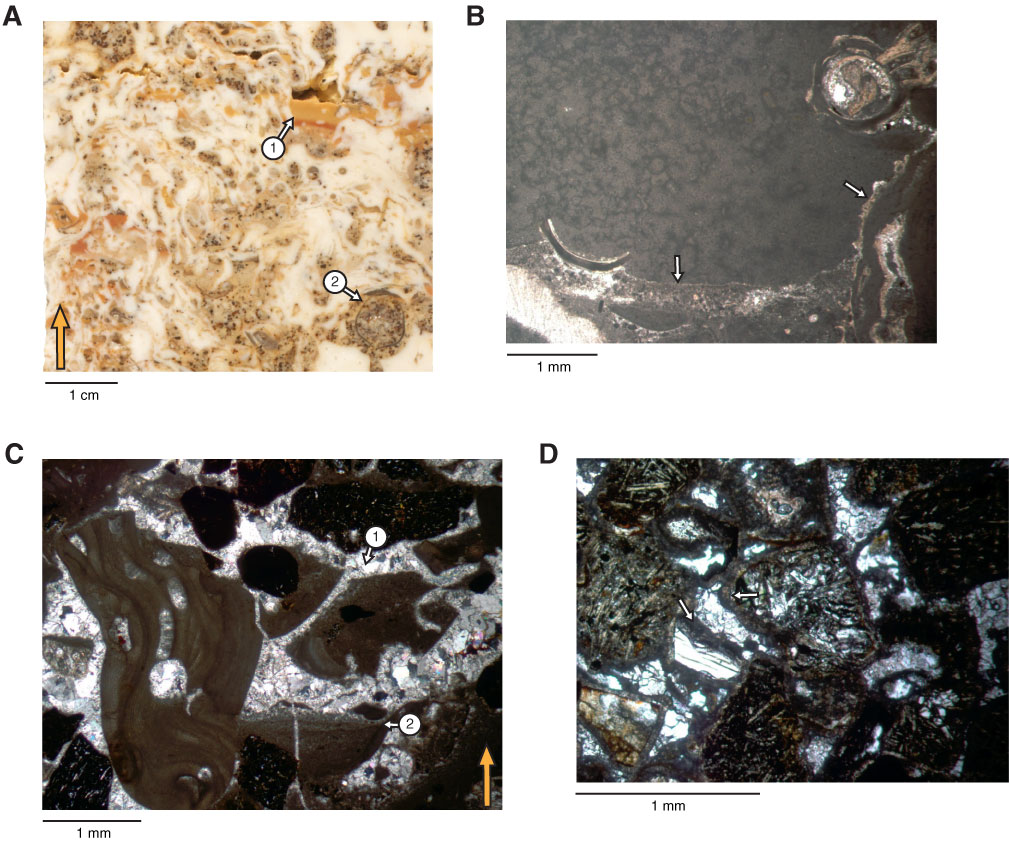
Figure F6. Close-up photograph and thin section plane-polarized photomicrographs displaying cement types and dissolution features in Unit II. Orange arrows point toward top. A. Geopetal structure in an algal framework in Subunit IIA (interval 330-U1376A-4R-3W, 102.5–107.5 cm), including (1) fossil-barren yellowish micrite filling a probable dissolution void and (2) valves of a boring bivalve inside a borehole. B. Dissolution void filled with fossil-barren micrite in algal rudstone in Subunit IIA (Sample 330-U1376A-3R-4, 129–133 cm; Thin Section 239). Arrows indicate dissolution surface of original rudstone. C. Basalt conglomerate with (1) dogtooth cement and (2) a geopetal structure defined by vadose silt and sparry calcite cement in Subunit IIB (Sample 330-U1376A-5R-1, 65–67 cm; Thin Section 244). Cement and structure indicate a vadose environment of cementation. D. Basalt conglomerate with two generations of calcite cement (fibrous and granular) in Subunit IIB (Sample 330-U1376A-5R-2, 80–83 cm; Thin Section 245). Arrows indicate occurrence of fibrous fringing cement.

Previous | Close | Next | Top of page